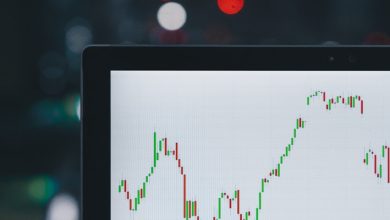Predicting the Next Bull Market: Indicators and Analysis

- Understanding the Bull Market Cycle
- Key Indicators for Predicting a Bull Market
- Analyzing Historical Data to Forecast the Next Bull Market
- The Role of Economic Factors in Bull Market Predictions
- Technological Advances and Their Impact on Bull Markets
- Expert Opinions on Timing the Next Bull Market
Understanding the Bull Market Cycle
Understanding the bull market cycle is crucial for investors looking to predict the next upswing in the market. By analyzing historical data and market trends, one can identify key indicators that signal the beginning of a bull market.
One of the primary indicators of a bull market is a sustained period of rising stock prices. This upward trend is typically characterized by increasing investor confidence and a growing economy. Additionally, low levels of unemployment and strong corporate earnings can also indicate that a bull market is on the horizon.
Another important factor to consider is the behavior of leading economic indicators. These indicators, such as GDP growth, consumer spending, and housing starts, can provide valuable insights into the health of the economy and the likelihood of a bull market. By monitoring these indicators closely, investors can make more informed decisions about when to enter the market.
It is also essential to pay attention to market sentiment and investor psychology during the bull market cycle. As prices continue to rise, investors may become increasingly optimistic and willing to take on more risk. This can create a self-reinforcing cycle where rising prices attract more investors, further driving up prices.
In conclusion, understanding the bull market cycle requires a comprehensive analysis of various factors, including stock prices, economic indicators, and investor sentiment. By staying informed and vigilant, investors can position themselves to capitalize on the next bull market and maximize their returns.
Key Indicators for Predicting a Bull Market
Predicting a bull market is crucial for investors looking to capitalize on positive market trends. By analyzing key indicators, investors can make informed decisions on when to enter the market. Some key indicators to consider include:
– **Economic Indicators**: Economic indicators such as GDP growth, unemployment rates, and consumer spending can provide valuable insights into the health of the economy. A strong economy is often a precursor to a bull market.
– **Market Sentiment**: Market sentiment, as measured by indicators like the CBOE Volatility Index (VIX) or the Put/Call ratio, can give investors an idea of how optimistic or pessimistic market participants are. High levels of optimism may signal a potential bull market.
– **Corporate Earnings**: Corporate earnings are a fundamental driver of stock prices. Strong earnings growth across various sectors can indicate a healthy market environment that may lead to a bull market.
– **Interest Rates**: Interest rates have a significant impact on market performance. Low interest rates can stimulate economic growth and drive stock prices higher, potentially signaling a bull market.
– **Technical Analysis**: Technical analysis involves studying historical price trends and patterns to predict future market movements. Indicators like moving averages, relative strength index (RSI), and MACD can help investors identify potential entry points in a bull market.
By paying attention to these key indicators, investors can better position themselves to take advantage of a bull market when it occurs. Conducting thorough research and staying informed on market trends can help investors make more strategic investment decisions.
Analyzing Historical Data to Forecast the Next Bull Market
One effective approach to predicting the next bull market is by analyzing historical data. By looking at past trends and patterns, investors can gain valuable insights into potential future market movements. This analysis involves examining various indicators and metrics that have historically been correlated with bull markets.
Some key indicators to consider when forecasting the next bull market include historical price movements, market volume, economic data, and investor sentiment. By studying how these factors have behaved in the past leading up to bull markets, investors can better understand the current market conditions and make more informed predictions about the future.
Additionally, technical analysis can be a useful tool for identifying potential opportunities in the market. By studying charts, trends, and patterns, investors can spot potential signals that may indicate the beginning of a bull market. This type of analysis can help investors make more strategic decisions about when to enter and exit the market.
Overall, analyzing historical data is an essential part of forecasting the next bull market. By examining past trends and patterns, investors can gain valuable insights that can help them make more informed decisions about their investments. By utilizing a combination of indicators, economic data, and technical analysis, investors can increase their chances of success in predicting the next bull market.
The Role of Economic Factors in Bull Market Predictions
Economic factors play a crucial role in predicting the onset of a bull market. Analysts and investors closely monitor various economic indicators to gauge the health of the economy and forecast potential market trends. Some key economic factors that are commonly considered in bull market predictions include:
- Gross Domestic Product (GDP): GDP growth is a vital indicator of economic health. A rising GDP often indicates increased economic activity, which can lead to a bull market.
- Unemployment Rate: A low unemployment rate is generally seen as a positive sign for the economy. When more people are employed, consumer spending tends to increase, which can drive stock prices higher.
- Interest Rates: Central banks’ monetary policies, including changes in interest rates, can significantly impact stock market performance. Lower interest rates can stimulate economic growth and boost stock prices.
- Inflation Rate: Inflation erodes the purchasing power of money, which can have a negative impact on consumer spending and corporate earnings. A stable inflation rate is typically preferred for a healthy bull market.
- Consumer Confidence: Consumer sentiment is a key driver of economic activity. High consumer confidence often translates to increased spending, which can fuel a bull market.
By analyzing these economic factors and their trends, investors can gain valuable insights into the potential direction of the market. However, it is essential to consider other factors such as geopolitical events, technological advancements, and market sentiment when making predictions about the next bull market.
Technological Advances and Their Impact on Bull Markets
Technological advancements have played a significant role in shaping bull markets over the years. These advancements have revolutionized industries, increased efficiency, and opened up new opportunities for growth. As investors look for the next bull market, it is important to consider the impact of technology on market trends.
One key area where technological advances have made a significant impact is in the realm of automation. Automation has streamlined processes, reduced costs, and improved productivity for many companies. This increased efficiency often leads to higher profits and can drive stock prices higher, contributing to a bull market.
Another important technological advancement to consider is the rise of artificial intelligence (AI) and machine learning. These technologies have the potential to analyze vast amounts of data quickly and accurately, helping investors make better-informed decisions. As AI continues to evolve, it is likely to play an increasingly important role in predicting market trends and identifying potential opportunities in the next bull market.
Additionally, the growth of e-commerce and digital payment systems has opened up new avenues for companies to reach customers and drive sales. As more consumers turn to online shopping, companies that embrace these technologies stand to benefit from increased revenue and market share. This shift towards digital platforms can be a key indicator of a potential bull market in sectors such as technology and consumer goods.
Overall, technological advances have the potential to drive the next bull market by increasing efficiency, improving decision-making, and opening up new opportunities for growth. As investors analyze market trends and look for indicators of an upcoming bull market, it is important to consider the impact of technology on various industries and sectors. By staying informed and adapting to technological changes, investors can position themselves to capitalize on the next wave of market growth.
Expert Opinions on Timing the Next Bull Market
Experts have varied opinions when it comes to timing the next bull market. Some analysts believe that looking at historical data and market trends can provide valuable insights into when the next bull market might occur. Others suggest that focusing on key economic indicators such as GDP growth, unemployment rates, and interest rates can help predict the timing of the next bull market.
Additionally, some experts argue that technical analysis, such as studying charts and patterns, can be a useful tool in predicting the next bull market. On the other hand, fundamental analysis, which involves analyzing financial statements and company performance, is also considered by some to be crucial in determining when the next bull market will start.
It is important to note that while these expert opinions can provide valuable insights, predicting the exact timing of the next bull market is inherently challenging. Market dynamics are influenced by a wide range of factors, many of which are unpredictable. As a result, it is essential for investors to approach market timing with caution and to consider a diverse range of indicators and analysis methods when trying to predict the next bull market.



